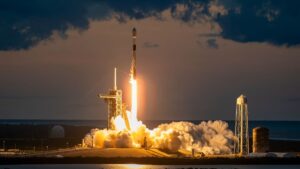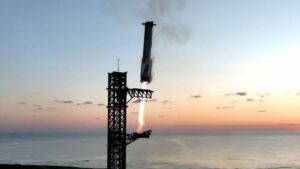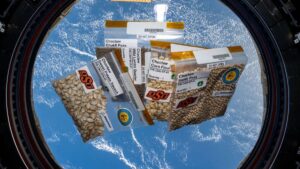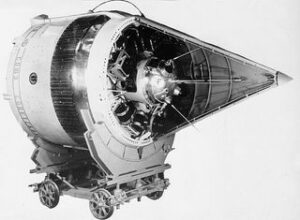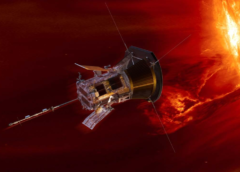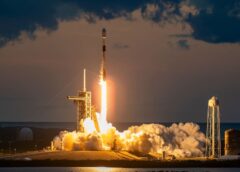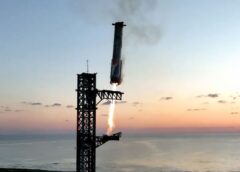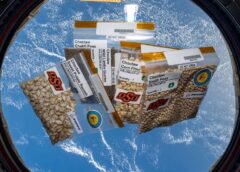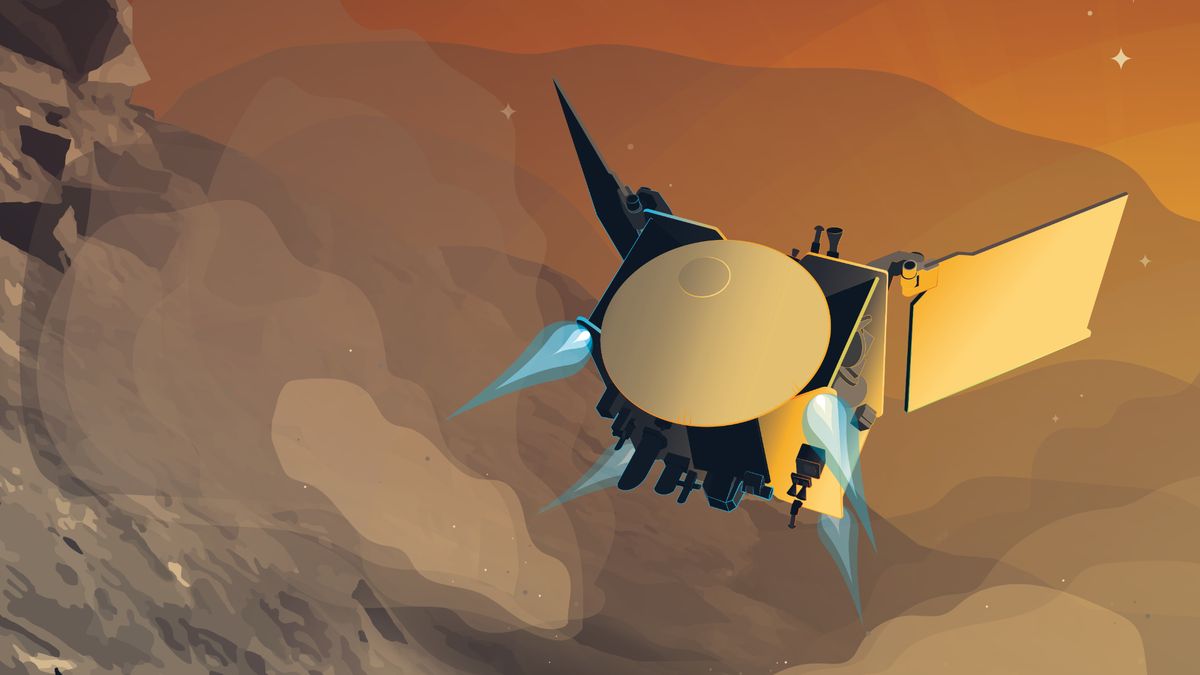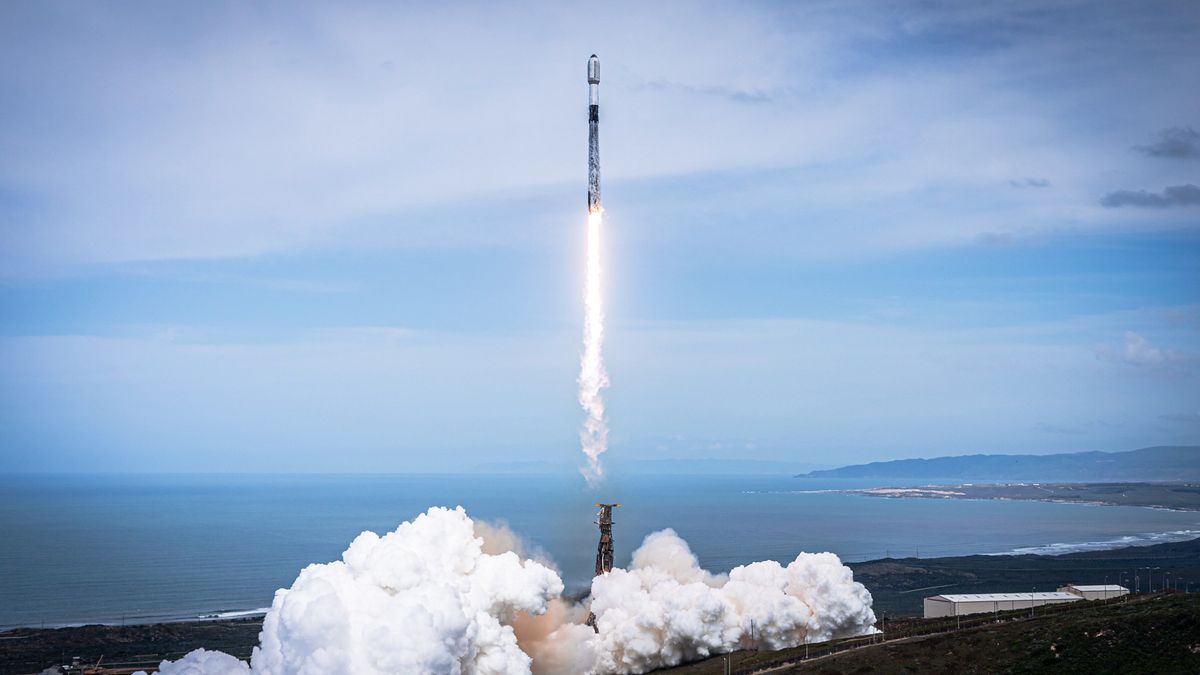A SpaceX rocket engine that was used in the launch of an Israeli company’s first attempt at landing on the moon has now, itself, landed in the Smithsonian. It is one of the first examples of SpaceX hardware to represent the U.S. commercial spaceflight company in the national collection. The Merlin engine and a grid fin were donated by SpaceX to the National Air and Space Museum in Washington, D.C. “Two new artifacts from SpaceX‘s Falcon rocket have joined our collection,” the National Air and Space Museum posted to its…
Read MoreHow our Milky Way galaxy would look in gravitational waves (video)
A simulated map of the Milky Way as it would appear in gravitational waves has given a powerful impression of what future space-based detectors will observe. Over 90 gravitational-wave events have been detected so far by the triumvirate of ground-based detectors — the Laser Interferometer Gravitational-Wave Observatory (LIGO) in the U.S., Virgo in Italy and KAGRA in Japan. All these detected events are mergers of stellar-mass black holes and/or neutron stars in distant galaxies; no gravitational-wave events have been found coming from our Milky Way galaxy. However, our galaxy is…
Read MoreOSIRIS-REx Sample Return Capsule Lands in the Utah Desert
The sample return capsule from NASA’s OSIRIS-REx mission is seen shortly after touching down in the desert, Sunday, Sept. 24, 2023, at the Department of Defense’s Utah Test and Training Range. The sample was collected from the asteroid Bennu in October 2020 by NASA’s OSIRIS-REx spacecraft.
Read MoreNASA Names New Head of Technology, Policy, Strategy
NASA Administrator Bill Nelson announced Monday Charity Weeden will serve as associate administrator for the agency’s Office of Technology, Policy, and Strategy (OTPS), effective immediately. Weeden succeeds Bhavya Lal, who left the agency in July, and Ellen Gertsen, who had been serving as the office’s acting leader since then.
Read MoreHeating and cooling space habitats isn’t easy – one engineering team is developing a lighter, more efficient solution
China, India and the U.S. have all achieved landing on the Moon in the 2020s. Once there, their eventual goal is to set up a base. But a successful base – along with the spacecraft that will carry people to it – must be habitable for humans. And a big part of creating a habitable base is making sure the heating and cooling systems work. That’s especially true because the ambient temperature of potential places for a base can vary widely. Lunar equatorial temperatures can range from minus 208 to 250 degrees Farenheit (minus 130 to 120…
Read MoreScience in Space: Week of Sept. 22, 2023 – Exposing Materials to Space
Crew members aboard the International Space Station conducted a variety of scientific investigations during the week ending Sept. 22, 2023, including conducting MISSE-18.
Read MoreNuclear ‘pasta’ cooked up by dead stars could unravel the secrets of stellar afterlife
Imagine cooking pasta at a temperature of over a trillion degrees. But this isn’t just any ordinary Sunday-night dish; it’s the “nuclear pasta” found inside neutron stars. Researchers have just revealed that these strange nuclear shapes penetrate far deeper into the cores of neutron stars than we ever thought possible, and that this can radically alter the properties of those dead stars. Neutron stars are the very definition of extreme. The leftover cores of some of the most massive stars in the universe, they usually cram a few suns’ worth…
Read MoreAfter NASA’s epic OSIRIS-REx capsule landing success, spacecraft heads to asteroid Apophis on new mission
The NASA probe that delivered precious samples of the space rock Bennu to Earth is now on an extended voyage to study an infamous near Earth asteroid. OSIRIS-REx completed NASA’s first asteroid sample return mission on Sunday (Sept. 24), when its reentry capsule landed in the western Utah desert. But now the main spacecraft has embarked on a side quest: to scope out and get up close with Apophis, an asteroid previously thought to potentially pose a threat to Earth. The spacecraft used its return to Earth to fling itself…
Read MoreNASA’s First Asteroid Sample Has Landed, Now Secure in Clean Room
After years of anticipation and hard work by NASA’s OSIRIS-REx (Origins, Spectral Interpretation, Resource Identification and Security – Regolith Explorer) team, a capsule of rocks and dust collected from asteroid Bennu finally is on Earth. It landed at 8:52 a.m. MDT (10:52 a.m. EDT) on Sunday, in a targeted area of the Department of Defense’s Uta
Read MoreSpaceX to launch 21 Starlink satellites from California early on Sept. 25
A SpaceX Falcon 9 rocket will launch from California early Monday morning (Sept. 25), carrying 21 Starlink satellites to orbit. The Falcon 9 is scheduled to lift off from Vandenberg Space Force Base in Florida Monday at 3:23 a.m. EDT (0723 GMT; 12:23 a.m. local California time). You can watch it live via SpaceX‘s account on X (formerly Twitter); coverage will start about five minutes before liftoff. Related: Starlink satellite train: How to see and track it in the night sky If all goes according to plan, the Falcon 9’s…
Read More
